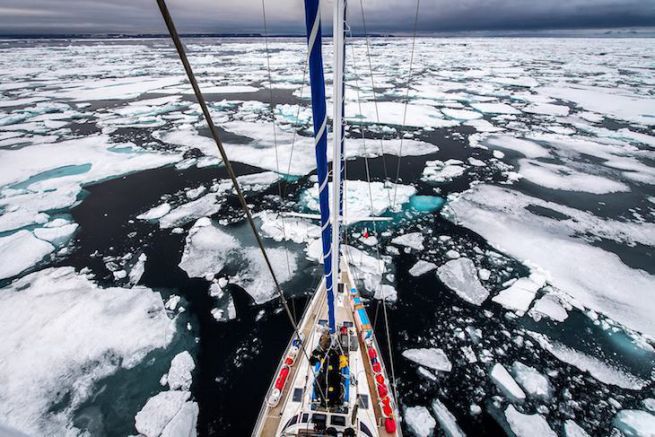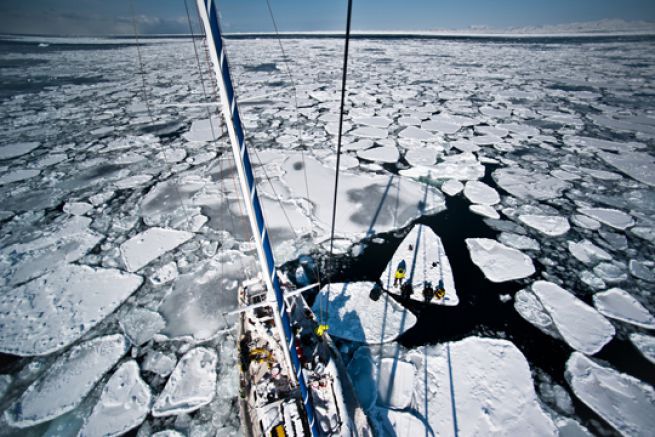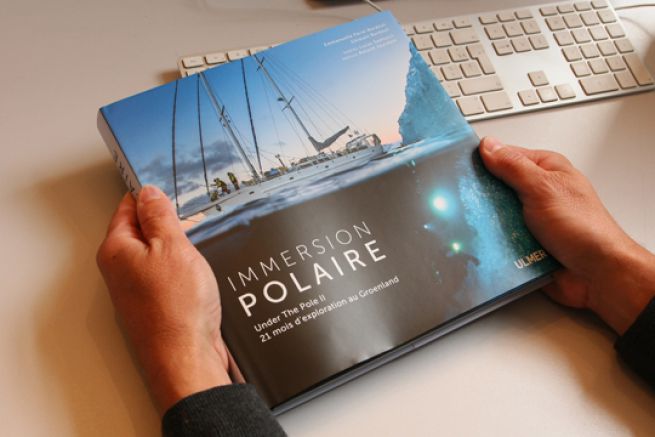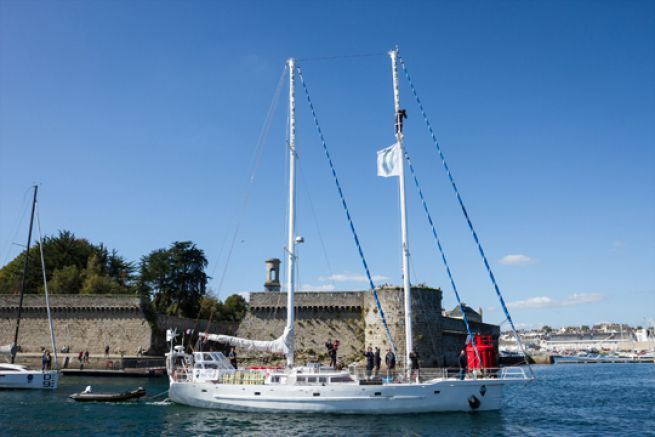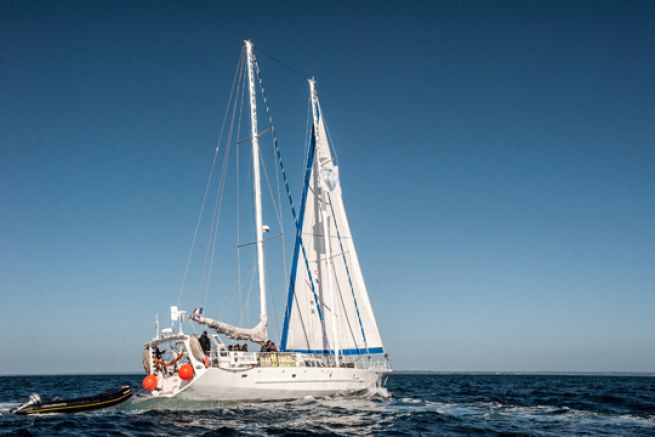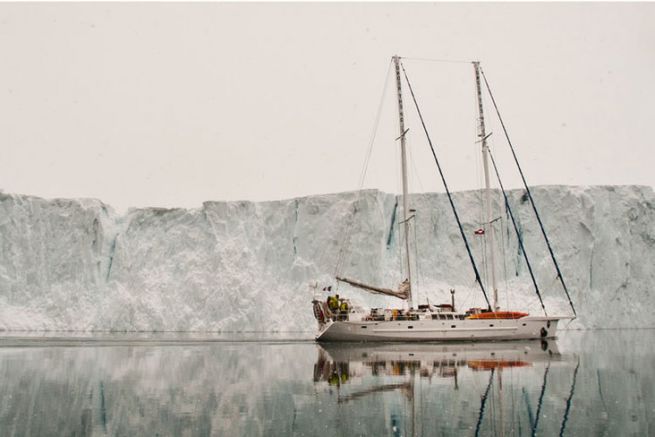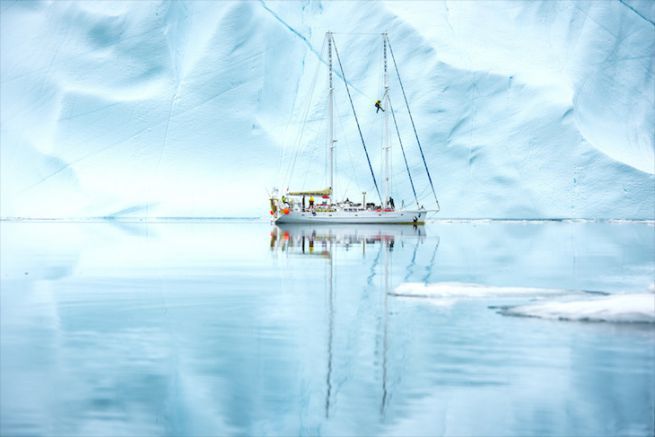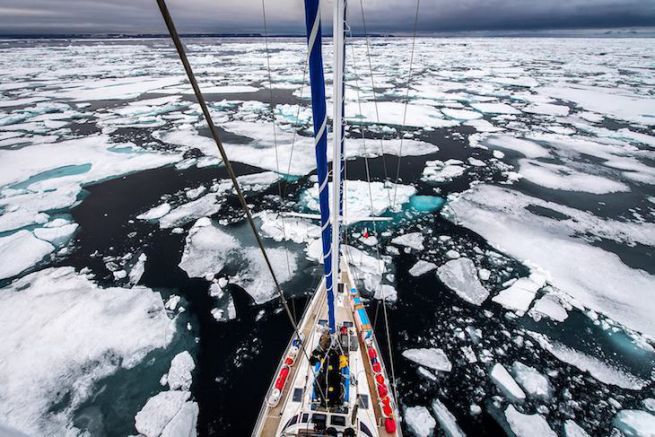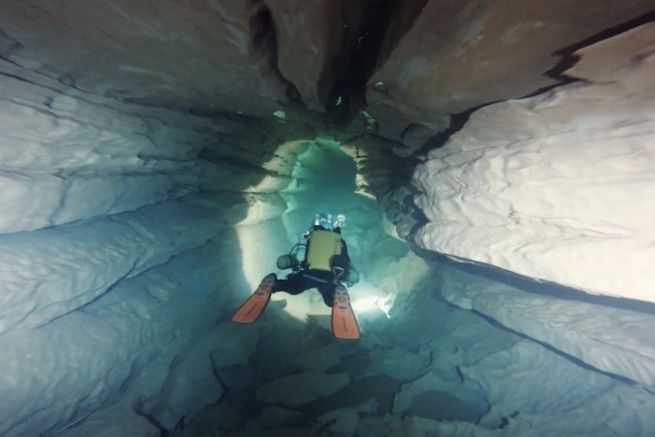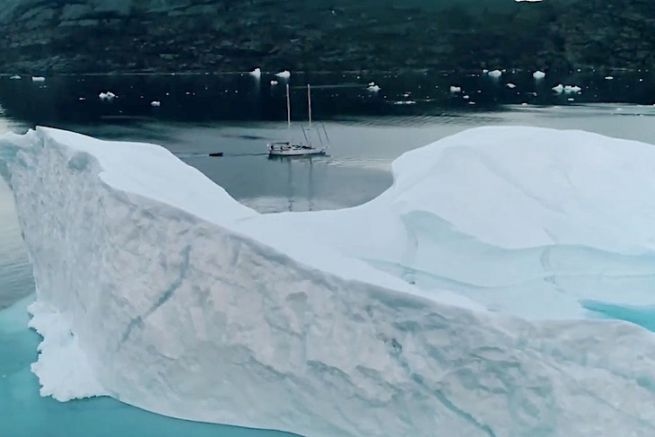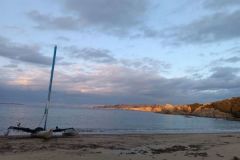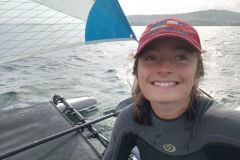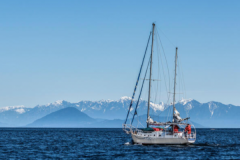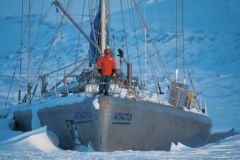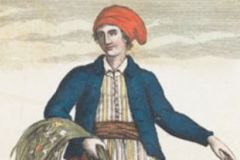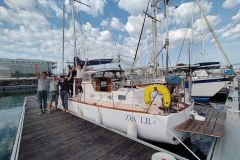Back to Greenland
This summer 2017, the Under the Pole III team returned to Greenland, where they wintered on the second 2014/2015 expedition. During one month, they made a series of dives dedicated to the scientific programs of researchers Marcel Koken (CNRS) and Cyril Gallut (National Museum of Natural History), before crossing the Baffin Sea and reaching the entrance of the Northwest Passage at Pond Inlet, Canada. This passage connects the Atlantic to the Pacific, but only opens once a year, especially during the summer.
Despite a few episodes of blockage in the middle of the ice, the Why, the schooner of the expedition.. In the past few years, the "Sisterhood", in which Ghislain and Emmanuelle travel with their two children (among others), has managed to make its way through. The team made it to the Bering Strait in time for the start of the fall storms, and is now in Nome, Alaska (the departure point for Yvan Bourgnon's Northwest Passage Challenge).
"The greatest challenge of this Arctic leg is to find the balance between daily life on board, diving, scientific studies, sailing, stopovers... and the rhythm of the children." explains Emmanuelle.
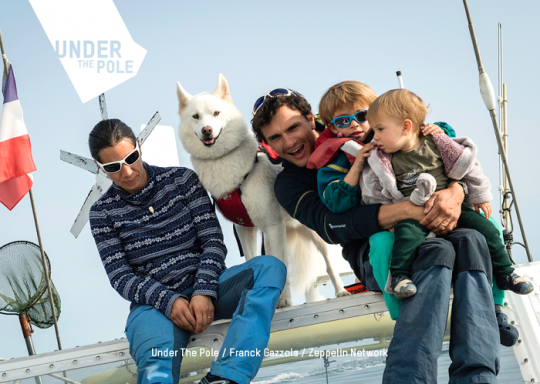
Promising dives
In 2015, during the previous expedition, the Under The Pole team carried out two campaigns of deep dives, in summer and winter under the pack ice, leading to two world firsts by submerging more than 100 metres under the Arctic Ocean. This year, they were able to repeat the operation with adapted equipment. Equipped with new heated wetsuits and with 50 to 100 kilos on their backs, Ghislain Bardout and his teammates made around fifty dives.
"These were some of the best dives we've ever done in these latitudes. I will remember in particular a magnificent fall at the entrance to the Northwest Passage and the discovery of a wreck at an anchorage where we had taken shelter because of bad weather. Canada offered us very good visibility and always this extraordinary feeling of exploring previously unknown areas", says Ghislain Bardout.
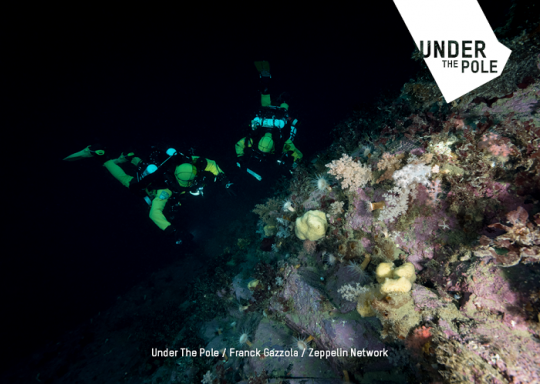
During these dives, Marcel Koken, a CNRS researcher present on board, a specialist in natural fluorescence, was able to send a team on mission, but also to dive himself in search of promising specimens. And this was the case, as he explains
"We found a Quiton that fluoresces and may contain a new red fluorescent protein. This type of protein is being sought because its application in medical imaging would allow us to see inside an animal or human body without having to operate on it. A sea urchin specimen is also of interest because it could contain a new family of fluorescent protein or demonstrate the presence of a known protein in a new group."
Return to France before the 2 e shipping stage
The Under The Pole team will be back in France between the end of October and the beginning of November for 5 months. They will then leave again in spring 2018 to transport the Why from Greenland to Polynesia and will start on the 2nd of November e part of their three-year expedition.
